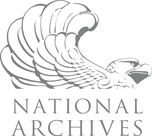 Webコンテンツの表示
Webコンテンツの表示
Who is the Audience?
Objective: By analyzing, and synthesizing information from video and traditional documentary primary sources, students will discover that ideas are communicated on many levels, and that a single presentation may have different meanings and understandings to different people comprising an audience.
Grade Level: 6-12
Compelling Questions:
- How did the “Day of Infamy” change US and World History?
- How can public support be an effective tool in leadership?
Historic Significance: Other than the annual State of the Union Address Presidents rarely make appearances before a Joint Session of Congress: when they do the purpose is of national importance. The Day of Infamy speech was designed to: inform Congress and the American people about the tragedy that had just occurred; make the case for seeking a declaration of war against Japan; rally and reassure the American people; and establish a record for history of Japanese actions and American reactions.
Materials: Re-mastered video presentation of President Roosevelt’s December 8, 1941 address to the joint Session of Congress and documentary sources drawn from the Roosevelt Library and Museum’s website, the Library’s archives, and other internet websites, books and magazines. The speech analysis worksheet. For a copy of the film, please send your mailing address to Jeffrey.Urbin@nara.gov.
Procedure:
- Share with your students the complete re-mastered clip of the President’s Day of Infamy speech and a transcript of the speech. Ask the students to carefully consider and answer the questions on the speech analysis worksheet.
- Lead a discussion analyzing the effectiveness of this speech.
Supporting Questions:
- What lasting impact has the Day of Infamy speech had on our collective national memory of identity?
- What was the purpose of the President’s address to Congress?
- Why did President Roosevelt wait until the day after the attack to address the nation?
- What evidence does the president present to underscore the surprise nature of the attack?
- Why did FDR choose to go before the entire Congress rather than simply call the congressional leaders to the White House for a briefing?
Concluding Activity:
Share with your students a copy of the text of the much longer address prepared by Assistant Secretary of State Sumner Welles that FDR chose not to deliver and ask them to apply the same questions to that address. Why do they suppose FDR decided to go with the speech he delivered instead of the longer one?
Or
Share with your students Mrs. Roosevelt’s address to the nation on the evening of December 7th,1941. Ask them to consider: how her remarks differ from those of the President? What audience was Mrs. Roosevelt trying to reach? To what extent did her address pave the way for his?
One Step beyond: Ask the students to locate and watch the oval office address given by President Bush following the attacks on September 11, 2001. In what ways are the speeches similar? In what ways are they different? What audiences was President Bush trying to reach? What messages was he sending?



